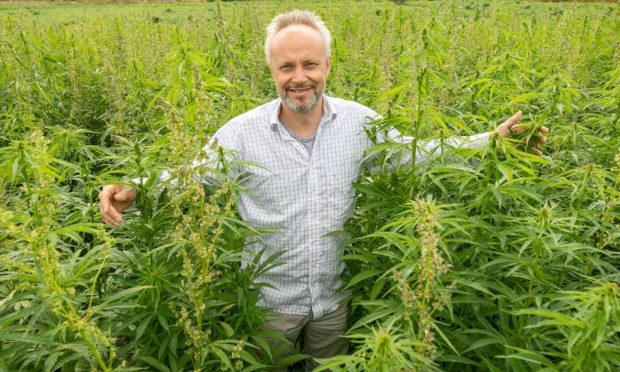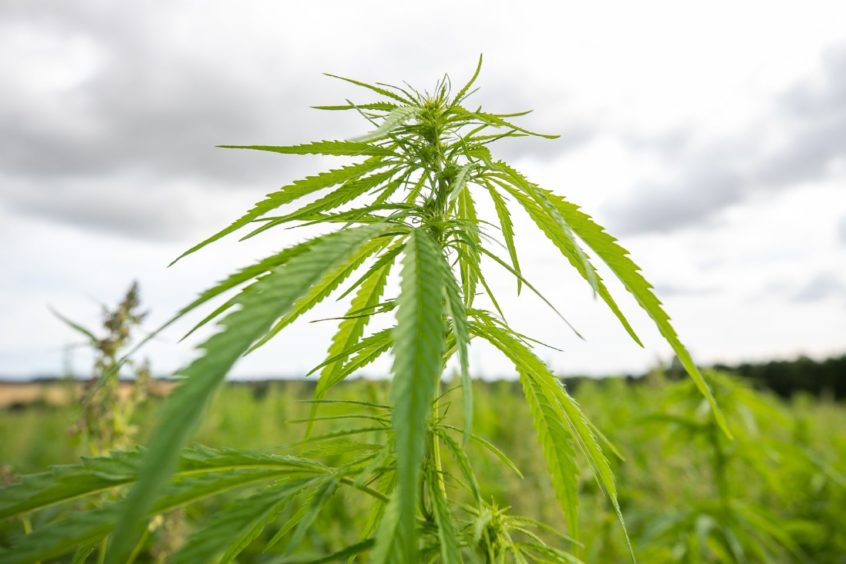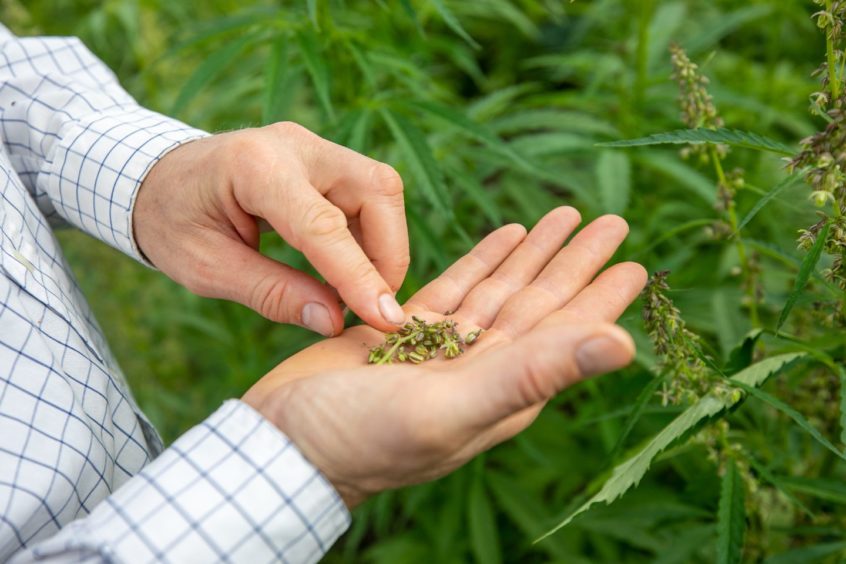A fledging hemp farming operation spread across 40 hectares of Angus and Aberdeenshire is enjoying an ‘explosive’ first season with every prospect that the crop could become a valuable addition to future arable systems along the east coast.
While having to be grown under licence due to its cannabis connections, the Scottish crop is heading for a quite different range of potential outlets.
Sales options include processing hemp seed for human and animal consumption, using it to make gluten-free flour, extracting salad dressing oil from the seed and, at the other end of the scale, using hemp straw as a biomass feedstock.
The key question right now, however, is whether or not hemp can be grown successfully under Scottish conditions and how well it might fit into existing arable rotations.
The early signs are encouraging, according to Angus farmer, Robert Ramsay, whose own first season crop was planted at the beginning of June and is already an impressive sight.
One of 10 growers involved in a hemp farming trial, he came to the project as a result of being part of a producer-led group, initiated by the Scottish Government and run by SAOS, which was charged with exploring hemp as a new commercial farming option.
Similar groups have also been looking at other cropping ideas in recent months.
“With so many sales options emerging we decided to stop talking about it and to try growing it instead,” said Mr Ramsay, who farms West Mains of Kinblethmont, Arbroath.
“We started out by applying to the Home Office for a growers’ licence, a process that involved presenting police records to show we were capable and competent to produce hemp.
“Next, we imported some quite expensive seed from Europe, selecting the Finnish variety, Finola, for our own growing conditions. Ideally, the seed should go into warm soil, certainly warmer than you expect to have in the east of Scotland.”
Having prepared a four-hectare seed bed in April, Mr Ramsay was ready to start sowing in May, at which point it promptly rained for the whole month.
“We finally got the crop planted in early June and were pleased with the way it started,” he said.
“That was despite discovering that crows love both newly planted hemp seed and the young shoots the crop produces.
“After growing pretty much as expected in June the crop just exploded into life in July, leaving us today with shoulder-high flowering plants.
“And that’s where we are at present. It’s really a chicken and egg situation in which until we’ve produced the crop and see what we’ve got available to sell, we can’t organise either the processing or marketing.”
With the other nine growers also planting about four hectares each, the trial should allow sales potential to be tested across a number of options.
“We’re obviously a long way from being able to draw firm conclusions about the future of hemp in Scotland but we are a lot further on from when we were just talking about it,” said Mr Ramsey.
“We know we can grow it, for example, and that the planting process fits into a time of the season when arable farmers shouldn’t have too many other demands on their time, unless they’re major potato growers.
“Harvesting is a whole new ballgame, however, which we still have to embrace. We’re anticipating some fun and games on that, given that hemp straw is what you make ropes out of.”
The 10-grower plan is for everyone of sell sufficient crop bulk to cover their costs and to commit the remaining bulk to a micro-processing trial which is currently being set up.


